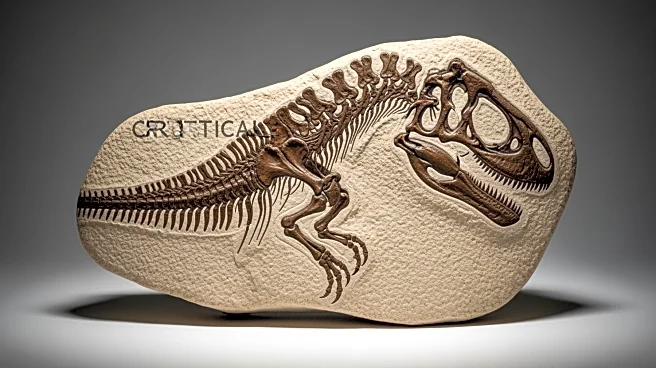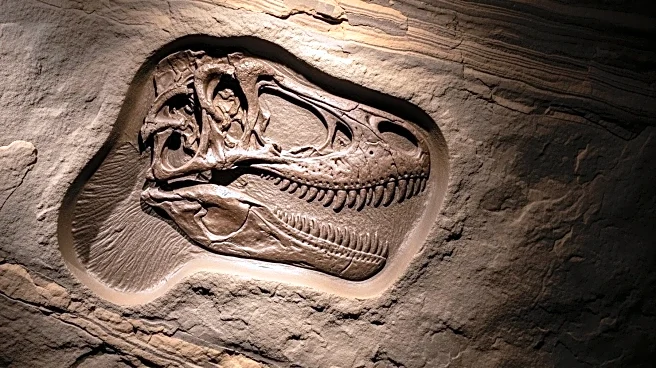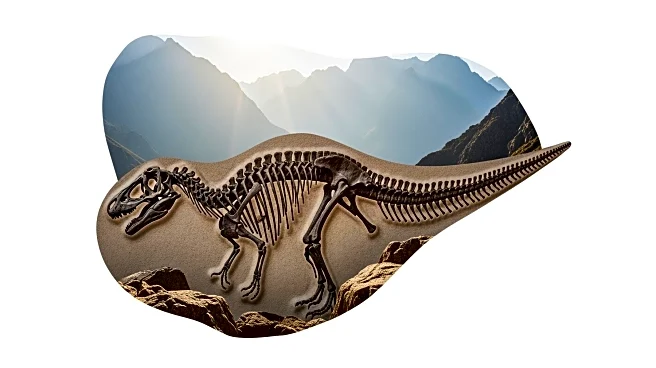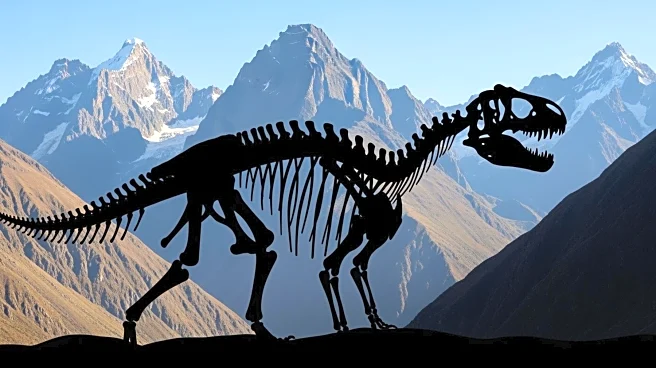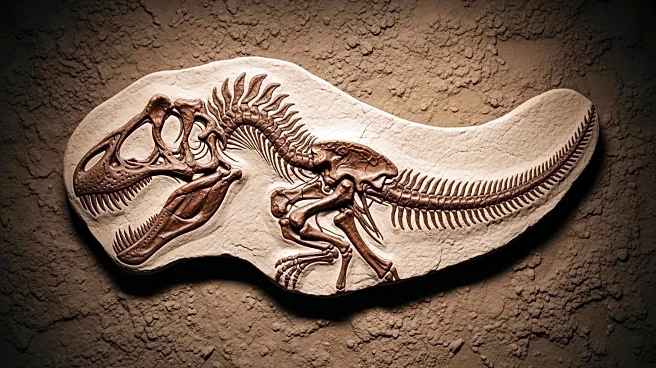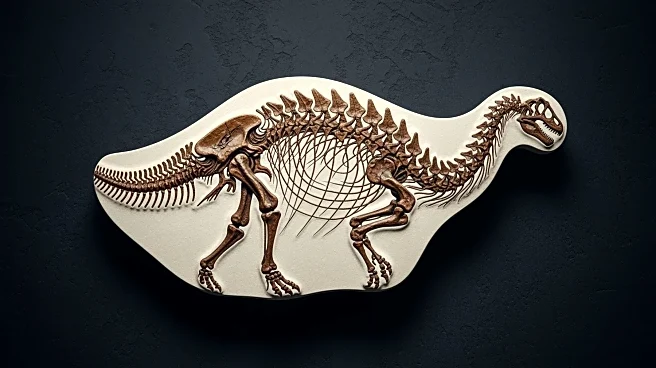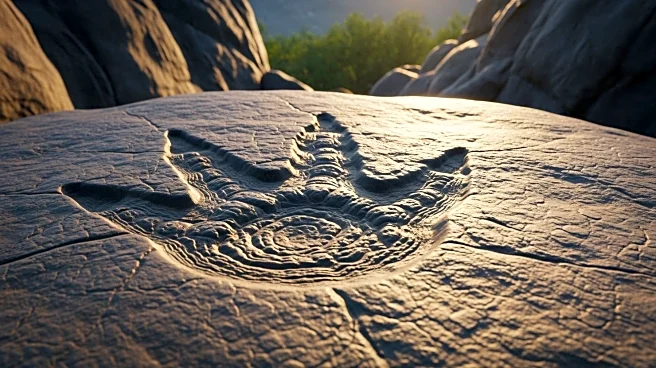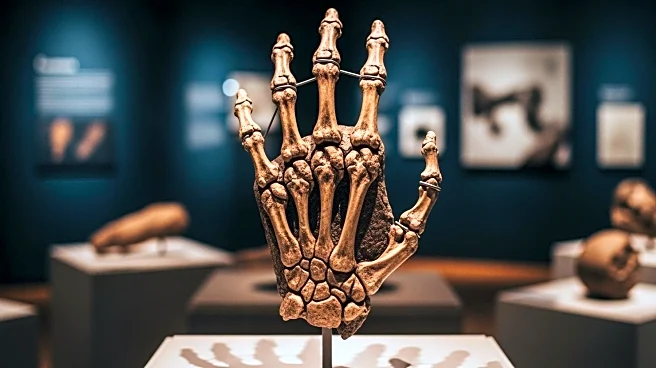What's Happening?
A team of paleontologists has uncovered a significant fossil in the Argentinian Andes, shedding new light on the evolution of sauropod dinosaurs. The fossil, named Huayracursor jaguensis, dates back to the Triassic
period, approximately 230 million years ago. This discovery challenges previous assumptions about the development of sauropods' long necks, suggesting that this trait began to evolve earlier than previously thought. The Huayracursor fossil, a partial skeleton, indicates that the dinosaur was around 2 meters long and weighed about 18 kilograms. This finding is crucial as it demonstrates that the elongation of neck bones was already present in some sauropodomorphs, contradicting the earlier belief that these dinosaurs were small, short-necked, and possibly omnivorous.
Why It's Important?
The discovery of Huayracursor jaguensis is pivotal in understanding the evolutionary history of sauropod dinosaurs, which includes some of the largest animals to have ever lived, such as Brontosaurus and Patagotitan. By revealing that neck elongation began earlier than previously thought, this fossil provides new insights into the adaptive strategies that allowed sauropods to become massive herbivores. This has implications for paleontologists studying the evolutionary pressures and environmental factors that influenced dinosaur development. The findings could lead to a reevaluation of the timeline and processes involved in the evolution of sauropods, impacting theories on dinosaur biodiversity and adaptation.
What's Next?
The discovery prompts further research into the early evolutionary stages of sauropodomorphs. Paleontologists may focus on finding additional fossils from the same period to better understand the diversity and characteristics of early sauropods. This could involve more extensive excavations in regions like the Argentinian Andes, where Huayracursor was found. Additionally, the findings may encourage scientists to revisit existing sauropod fossils with new perspectives, potentially uncovering overlooked features that could further illuminate the evolutionary path of these dinosaurs.
Beyond the Headlines
The Huayracursor discovery highlights the dynamic nature of paleontological research, where new findings can significantly alter established scientific narratives. It underscores the importance of continuous exploration and examination of fossil records to refine our understanding of Earth's biological history. This discovery also raises questions about the ecological conditions that favored the development of long necks in sauropods, offering a glimpse into the complex interactions between ancient species and their environments.
